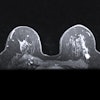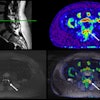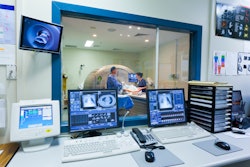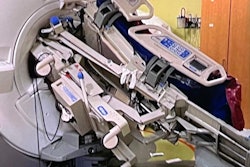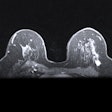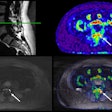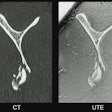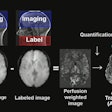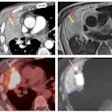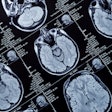Reinventing an MRI safety program can create a culture of safety, engage technologists, and inspire safer workflows, according to research shared May 3 at the International Society for Magnetic Resonance in Medicine (ISMRM) meeting.
Safety incidents around the world and the evolving complexities of implants, clothing, and technology inspired a team from St. Luke's University Health Network in Bethlehem, PA, to create and institute a multifaceted MRI safety program. Led by MR safety officer and radiologic technologist Jean Ellis-Land and fellow technologists Katherine Sedler and Monica Weiser, the program began by using surveys and observations to assess needs.
"Today's MRI environment includes potential hazards that did not exist 20 years ago," noted Ellis-Land and colleagues. "We can no longer rely on the outdated safety practices of years gone by. We need to embrace the MRI environment as it is today."
To that end, St. Luke's created a path for achieving a successful culture of safety in the MRI suite, for staff and patients. They described the process as broad, collaborative, and comprehensive, bringing together key elements of safety and increased staff commitment.
"We first sent out an anonymous survey to all MRI technologists in our network, asking them to rate their opinions on moving to a more ferrous-free environment, how the network could support that transition, and encouraged them to share any other thoughts they had about MRI safety," the team highlighted.
"Over the course of almost a year we used the survey results to direct education to techs in person during site visits as well as via weekly emails,' Pearls of Wisdom,' which covered a wide range of various MRI safety topics," they noted. "We included basics of MRI safety, new implants to be aware of, 'how to' guides as well as links to YouTube videos, podcasts, and MRI safety sites."
The pillars of the program are clearly written policies and, especially, raising awareness of how each person who participates in the MRI suite contributes to a safe environment. The group outlined specific measures in the policy:
- Reviewing the patient’s medical and surgical histories prior to their appointment
- Viewing prior imaging
- Proper patient screening practices
- Changing all patients into hospital clothing
- Reducing ferromagnetic detection alarms (alarm fatigue)
- Providing ongoing education on mitigating projectile and burn risks
The safety program also tailored efforts to specific risks such as clearing and scanning stimulators and cardiovascular implanted electronic devices (CIEDs). Program developers started by asking MRI technologists to rate their comfort level with screening and scanning implants; then they added support to boost their knowledge and confidence in handling CIEDs.
"The results informed us of where we needed to focus attention," Ellis-Land and colleagues explained. "We developed a step-by-step guide describing exactly how to clear and scan an inpatient with a CIED per our policy. We included contact information for reps, tips, and tricks for finding cardiology information, and cardiology forms for each manufacturer."
A CIED Practice Clearance Tracker was used to gain and maintain clearing skills. All techs clear one CIED patient per quarter which was logged for every tech in the network, regardless of whether they or their site routinely scanned CIEDS, to record the steps for one patient every quarter with the assistance of the MR safety officer.
In addition, the program provided support and education through quarterly meetings and MR safety officer audits to ensure technologists comply with standards.
Positive results of St. Luke's program included greater technologist engagement through increased incident documentation, adoption of safer workflow, and greater participation at safety meetings, the team noted. The program also increased noninjury incident reporting for the purpose of sharing and learning.
"We encourage a culture of safety that includes leadership encouraging techs to share near misses by writing an incident report whenever things don’t go 'just right,' Ellis-Land and colleagues stated. "Be it contrast issues, upset patients, safety issues, etc., by sharing through documentation, they could anonymously teach the rest of us. If these incidents are not shared, the problem cannot be fixed. We have a 'Plan of Action' for every safety incident, and we share those in our quarterly safety meetings. The incidents are reviewed by the [magnetic resonance medical director] MRMD and MR steering committees to support continuous improvement and identify areas for enhancing safety protocols."
St. Luke's University Health Network's MRI safety team added that the 'Secret Sauce' to success with the MRI safety program is in-person interactions. They encourage questions, conversations, and 'a-ha' moments. Going over one or two policies during monthly campus visits, giving each tech time to read the policies and ask any questions, and signing a log afterward that allows MR safety officers and managers to know at a glance which policies need to be reviewed and by whom.

